Bells from around the world (for approximately 300 pieces of metal)
First performance: Third Coast Percussion at The DeBartolo Performing Arts Center at The University of Notre Dame, on 30 September 2012
Duration: 35 minutes in four movements*

 View detailed list of the instruments needed to perform Resounding Earth
View detailed list of the instruments needed to perform Resounding Earth
*Form options: Movements can be played one after the other, in any order, in any subset, and it is optional to play music by other composers in-between the movements of Resounding Earth. Performing music by the "Homage to" composers would be ideal programming. The "Homage to" composers are: Olivier Messiaen, Igor Stravinsky, Luciano Berio, Pierre Boulez, Lou Harrison, György Ligeti, Edgard Varèse, Harry Partch and John Cage.
Movement #2, "Prayer"
Commissioned by
The University of Notre Dame's DeBartolo Performing Arts Center
With additional funding from
The Virginia Commonwealth University School of the Arts, Department of Music
And, with additional funding from
Chamber Music America Classical Commissioning Program, with generous funding provided by The Andrew W. Mellon Foundation, and the Chamber Music America Endowment Fund
Interview about "Resounding Earth”
presented by Debartolo Performing Arts Center
Documentary about "Resounding Earth”
Third Coast Percussion performs I. INVOCATION - Pulse Radiance
Third Coast Percussion performs II. PRAYER - Star Dust Orbits
Third Coast Percussion performs III. MANTRA- Ceremonial Time Shapes
Third Coast Percussion performs IV. REVERIE CARILLON- Crystal Lattice
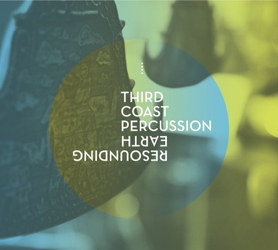
This work is available on
RESOUNDING EARTH.
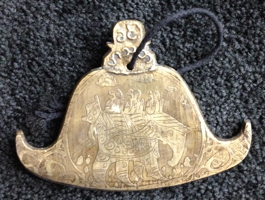 |
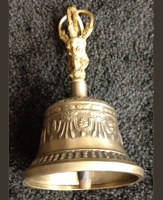 |
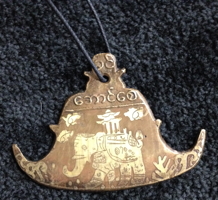 |
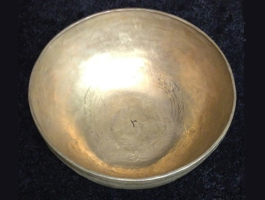 |
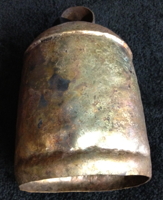 |
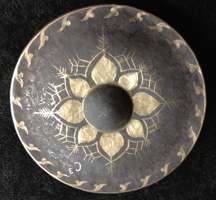 |
#1: INVOCATION — PULSE RADIANCE
(Homage to Olivier Messiaen and Igor Stravinsky)
#2: PRAYER — STAR DUST ORBITS
(Homage to Luciano Berio and Pierre Boulez)
#3: MANTRA — CEREMONIAL TIME SHAPES
(Homage to Lou Harrison and György Ligeti)
#4: REVERIE — CRYSTAL LATTICE
(Homage to Edgard Varèse, Harry Partch and John Cage)
Everything that we are made of, everything that we know and love, is made from the stars.
We (like all metals) are stardust. Metals are exceptionally resonant sound sources, rich with vibrational possibilities. As such, artisans across time and earth have been inspired to sculpt metals into musical instruments. More than five hundred pieces of metal are incorporated into the instrumentation of Resounding (re-sounding) Earth.
Resounding Earth can be heard and imagined as a United-Nations-of-Resonances.
Scored for four percussionists playing bells from a wide variety of cultures and historical periods, the project is conceived as a cultural statement celebrating interdependence and commonality across all cultures; and as a musical statement celebrating the extraordinary beauty and diversity of expression inherent in bell sounds.
Probing into bells' rich meanings and characteristics as carriers of history, ethnicity, societal and cultural connotations is a joy and wonder. Bells can be used to celebrate grand occasions, hold sacrificial rites, keep a record of events, give the correct time, celebrate births and weddings, mark funerals, caution a community, enhance any number of religious ceremonies, and are even hung around the necks of animals. As carriers of history and culture, bells, of numerous shapes, sizes, types, decorative patterns, weights, functions, and cultural connotations, enrapture and inspire.
Bells are central to Augusta's music; bells permeate her music. For over 25 years, in every work for orchestra, and in many for smaller ensembles, she has been composing music frequently using percussion consisting of bell sounds (pitched metal percussion and all the mallet percussion instruments) many of which have their origins in other than Western musical cultures. As such, her new piece is an extreme extension of work she has been doing for decades.
Augusta said:
"I treasure the opportunity to collaborate with the musicians in Third Coast Percussion because they are world-class virtuosi, visionary artists, and collegial, spectacular teammates. Involving a large battery of unique, ancient bells from around the world, our composition thus requires countless hours of refining nuances, colors, mallet choices, bell placements, and honing any number of other shadings, tunings, and gradations of the sound complexes. The musicians in Third Coast Percussion are ardent collaborators."
Resounding Earth is dedicated with admiration and gratitude to Third Coast Percussion.
— Augusta Read Thomas
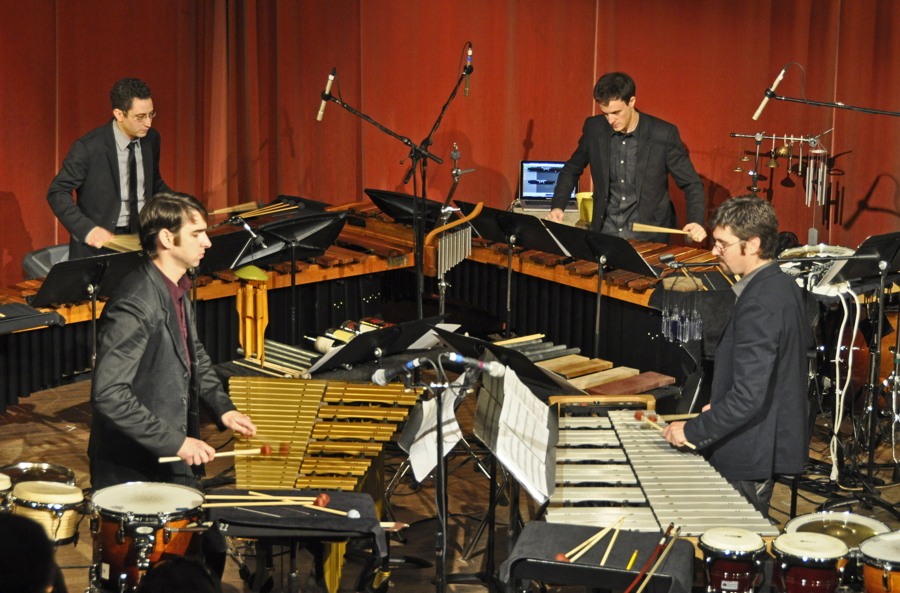
Tracy Monaghan, I CARE IF YOU LISTEN [Movement 2 is] “an almost palindromic and mystical arc, which suggests a kind of cyclical reincarnation.”
Steven Brown, The Texas Classical Review "As the four players chimed in with their individual parts, they sometimes gave them the immediacy of human speech: this declaration peaceful, that one urgent. At time, the voices’ prayers overlapped. And when the players rubbed the bowls with the heads of their drumsticks, the ethereal, sustained tones anticipated Mass Observation‘s hovering voices to come."
Timothy Mangan, Voice of OC (Orange County) "Augusta Read Thomas’s Resounding Earth (of which the quartet performed the second movement, “Prayer”) is scored for different types of bells, including small prayer bowls, variously sized and tuned, which resound beautifully when hit and glow warmly when a mallet is rolled around its outside, as when a finger rubs the rim of a wine glass. Thomas used these possibilities to create a meditative work that seemed to float weightlessly in the air, the reverberations from the bells coming together as chords in the distance."
Stephen Brookes, The Washington Post
"The National Gallery of Art's two-week American Music Festival — one of the most adventurous and exciting celebrations of contemporary music here in years — closed on Sunday with a performance by the Third Coast Percussion ensemble that proved just how vital and fertile new American music really is."
"The evening opened with Resounding Earth, an ambitious new work by Augusta Read Thomas. Played on an array of 300 bells, gongs and other instruments, it's an overtly spiritual work whose movements are titled "Invocation" and "Mantra" and the like. But there's nothing New Age-y about this music, no numbing yoga-music serenity. "Earth" burst irrepressibly and even joyously with life, dancing from the shimmering of Burmese temple gongs to brutal, almost shrapnel-like explosions of sound, in a sort of elemental and altogether rapturous song of the earth."
Corinna da Fonseca-Wollheim, The New York Times
"Resounding Earth, a 30-minute work for percussion quartet that received its New York premiere at Miller this week by the commandingly elegant Third Coast Percussion, calls for a battery of some 300 metal instruments, including tiny cymbal-like crotales, giant gongs, Burmese temple bells and metal coils. The work was developed in close collaboration with the Third Coast players and has been released on a beautiful CD by New Focus Recording."
"But there's nothing quite like the hypnotic experience of being immersed live in the shimmering, thrumming, pealing sound cloud created by these instruments, many of which have ceremonial powers in their cultures of origin. The work is divided into four movements, each dedicated to two or three influential 20th-century composers, with each one inhabiting a distinct mood. There was the brightness of Invocation (Messiaen and Stravinsky), a heady brew of overtones in Prayer (Berio and Boulez), the throbbing plasticity of Mantra (Lou Harrison and Ligeti), in which the players twirled bells before striking them so that the sound approximated a trill as the bell unwound itself, and the supremely vocal quality of Reverie (Varèse, Partch and Cage). The choreography of the performers is an integral part of any percussion piece and the Third Coast members were a delight to watch, moving with a riveting blend of precision and fluidity."
"Fluidity is a quality in much of Ms. Thomas's work, even as it retains the uncompromising angularity of modernism. Much of that has to do with her unerring ear for tone color and the ever-changing timbres she creates, which pull the listener along as surely as a traditional harmonic progression."
Oberon's Grove
Selene was followed by Resounding Earth, the composer's miraculous "symphony of bells' being given its New York premiere tonight. During the interview, Ms. Thomas had spoken of her long love for the sound of bells, crafted from the metals of the Earth. Her four-part work — each movement paying homage to 20th-century composers (from Stravinsky to Lou Harrison) whose work expanded the use of percussion — employs a huge number of bells of all kinds, and she crafts their individual sounds into waves of resonance from thunderous to whispered.
She had spoken of the 'decay' of sound after a bell has been struck; in Resounding Earth the overlay of fresh strikes over fading echoes gives the music an endless vibrancy. The musicians, at their most dancer-like here as they moved quickly from one set of bells to another, showed complete mastery of their craft and dedication to the composer's vision.
For me the most intriguing of the movements was the second, Prayer, in which the four players stood around a table on which twenty-six Tibetan bowls had been placed. By alternately striking or rubbing the bowls, miraculous overtones develop as reverberations fade away under the freshness of a new note.
Throughout the work, the composer's detailed instructions of how each individual bell was to be struck — and with what kind of mallet — was strictly observed by the players. The cumulative effect of this ritualistic piece was transportive and dreamlike: we are entranced as by the very music of the spheres.
John von Rhein, The Chicago Tribune
"Sitting in a packed house of excited, engaged young people at a concert by Third Coast Percussion last week in the University of Chicago's Logan Center for the Arts, I was reminded how much the city's lively — and getting livelier all the time — new-music scene owes to the active involvement of this age group."
"...Resounding Earth by Augusta Read Thomas, a former Chicago Symphony Orchestra resident composer who now serves as a University Professor at the U. of C. Thomas worked closely with Skidmore and his fellow musicians as they collected more than 125 bells from around the world to create the work's sound-world. They then spent countless hours refining nuances, tunings, even the onstage placement of the vast battery of bells and gongs."
"The four sections of Resounding Earth celebrate, in the composer's words, "commonality across all cultures," along with "the extraordinary beauty and diversity of expression" of instruments — including Burmese spinning bells, Indian Noah bells, Thai gongs and Japanese singing bowls, or rin. There's a ritualistic quality to Thomas' tintinnabulations, each percussionist assuming by turns a kind of hieratic function. Bell sounds at once ancient and modern — bright, dark, shimmering, shattering, rhythmic, lyric — combine to create a wondrous, otherworldly carillon. I found the delicate cosmic song of the Japanese rin in the "Prayer" section absolutely haunting."
"The Third Coast players made a terrific case for Resounding Earth. Their recording of Resounding Earth, containing spot-on audio and video performances, is available on New Focus Recordings. And Nimbus Alliance has just released a CD of Thomas' orchestral and chamber ensemble works, taken from concert performances by the CSO and MusicNOW ensembles under Pierre Boulez, Cliff Colnot and others. Further good news: The label has two more discs of Thomas' music in the pipeline."
Michael Cameron, Chicago Classical Review
Third Coast Percussion delivers powerful Thomas premiere at Logan Center
"It must have been heartening for contemporary music aficionados to see a nearly full house for Third Coast Percussion at the Logan Center in Hyde Park Friday. A major draw at the University of Chicago Presents event was the highly anticipated local premiere of Augusta Read Thomas' Resounding Earth, written for the quartet in 2012 and already the focus of a highly acclaimed recording."
"The back story of the piece makes for a program annotator's dream. Since the bells at the heart of the music have been a conceptual focus of much of Thomas' oeuvre, this ambitiously proportioned four-movement work could be viewed as a significant touchstone in her illustrious quarter-century career. A true composer/performer collaboration, it draws on the astonishing range of over 200 bells collected by the ensemble from around the globe, and over 300 pieces of metal in total. For all of the sonic sourcing from Asian locales, each of the four movements is also an homage to giants of Western composition. Even by modern multicultural standards, the accumulation of sound and ritual is truly encyclopedic."
"This is a lot of baggage to carry, but Thomas pulls it off triumphantly. The clear, semi-dry acoustics of Logan Center were a perfect fit for the strike-and-decay sonic profile, and the players threw themselves into their realization with obvious affection for both the composer and the centuries of musical traditions that shaped each instrument. While the work reflects Thomas' reverence for these cultural symbols, she shows no reticence in coaxing novel timbres from the vast array. A lesser composer might have drowned under the stress of such a profusion of sonic possibilities, but Thomas neatly matched each rhythmic gesture to an appropriate sound and dynamic."
"The opening movement ("Invocation — Pulse Radiance") is an homage to Stravinsky and Messiaen, and a compelling fusion of the former's primal rhythmic thrust with the later's celebrations of glistening iridescence. The flickering resonances of Burmese spinning gongs announced the opening of "Mantra — Ceremonial Time Shapes," inspired by Lou Harrison and György Ligeti. The sound world conjured in "Reverie — Crystal Lattice" was the most forceful and comprehensive of the four movements, and a final solitary strike on four chimes from the stage front made for an ingenious and compelling conclusion."
"The most memorable movement was in some respects also the simplest: "Prayer — Star Dust Orbits," an homage to Luciano Berio and Pierre Boulez. The featured instruments were temple bowls, mostly struck but also slowly rubbed along their circumference to produce an utterly beguiling metallic song. The periodic accumulation of sustained clouds of dissonance made for one of the most powerful new music experiences I've felt in years."
Peter Margasak, The Chicago Reader
Third Coast Percussion Resounding Earth (New Focus Recordings)
"Augusta Read Thomas...takes this work as an opportunity to explore bells at length, addressing their ritual use across cultures as well their everyday ring and clang, whether from atop a church or around the neck of a cow (the piece involves lots of other metal percussion too, though some of it is bowed or rubbed rather than struck). Third Coast executes the four-part composition with its typical clarity and precision, moving elegantly and deliberately among several colors and textures: stately and cyclical gamelanlike structures with brisk, hypnotic rhythms; contrapuntal melodies whose independent motion creates a deep harmonic resonance; and hovering, sumptuous atmospheric drones. It's never less than absorbing and otherworldly."
Doyle Armbrust, Time Out Chicago
Best of 2013: The top 10 classical and new-music albums of the year
Third Coast Percussion Resounding Earth (New Focus Recordings)
"The decay of a bell ring can be mapped linearly, but the resonance of struck metal contains in it an element of eternity, floating away rather than being extinguished. Augusta Read Thomas's new four-movement commission for Third Coast Percussion, Resounding Earth, embraces the spiritual connotations of these instruments with titles "Invocation," "Prayer," "Mantra" and "Reverie Carillon." The exuberant trades and dueting of the opening "Invocation" lift skyward as though each bell were tethered to a helium balloon. The dynamic range on display throughout the album further magnifies the elysian quality of Thomas's writing, and Third Coast's performance is as synchronous as it is dramatically fertile. Toss out those Deepak Chopra guided meditations cassettes and find a true state of bliss (with 100% less synthesizer) in Resounding Earth."
Steve Smith, New York Times, Arts Beat blog
THOMAS: Resounding Earth (New Focus Records)
"In Resounding Earth, composed by Augusta Read Thomas for the Chicago quartet Third Coast Percussion, a constellation of singing, ringing and chiming bells, gongs and other metallic implements, representing cultures and traditions from around the world, serves to honor nine venerated 20th-century composers. Bliss out to Ms. Thomas's transfixing shimmer on the immaculately recorded CD, and marvel at the ensemble performing the intricate work on the accompanying DVD."
Elaine Schmidt, Special to the Journal Sentinel (Milwaukee, WI)
Third Coast Percussion Ensemble fills hall with sound for Present Music
"Present Music opened Saturday evening's performance with a Vogel Hall stage filled with percussion curiosities."
"Featuring the Chicago-based Third Coast Percussion Ensemble, the program began with a completely fascinating performance of Prayer — Star Dust Orbits from Augusta Read Thomas's Resounding Earth."
"The four Third Coast players created an enormous palette of sounds using standing bells (think Tibetan singing bowls). The resonant sounds of the standing bells created such vivid sounds that one could almost imagine seeing the sound waves moving through the air and bouncing off of one another."
George Adams, American Record Guide "Augusta Read Thomas's Resounding Earth is an opportunity for the composer to explore an interest in bells that she's had for years. She explains that bells are used all over the world, for different purposes. The bells used here by Third Coast Percussion are of all shapes and sizes, as can be seen on the DVD included with the record. As the piece unfolds, different types of bells are brought to the fore, and different harmonic and rhythmic textures coincide with this change in timbre. The tension between bells as a universally appreciated instrument and their many uses is part of what makes the piece fascinating. The title seems to refer not to one earth, with its people unanimous in their musical expression, but rather to a tour of many bells and varied music. There are four movements, each of which feels like a new perspective on the same spirited percussion music. While there are complex rhythms, it is never messy, and the performance is gripping until the final rings have died out."
To obtain examination or performance material for any of
Augusta Read Thomas's works, please contact G. Schirmer Inc..
